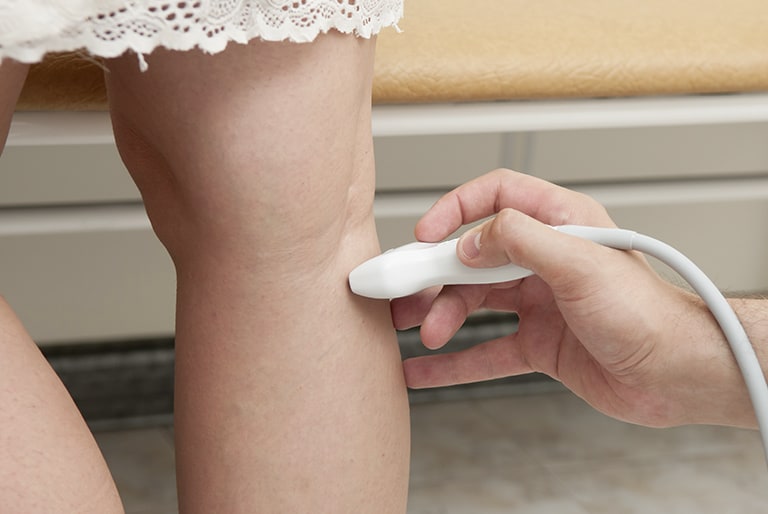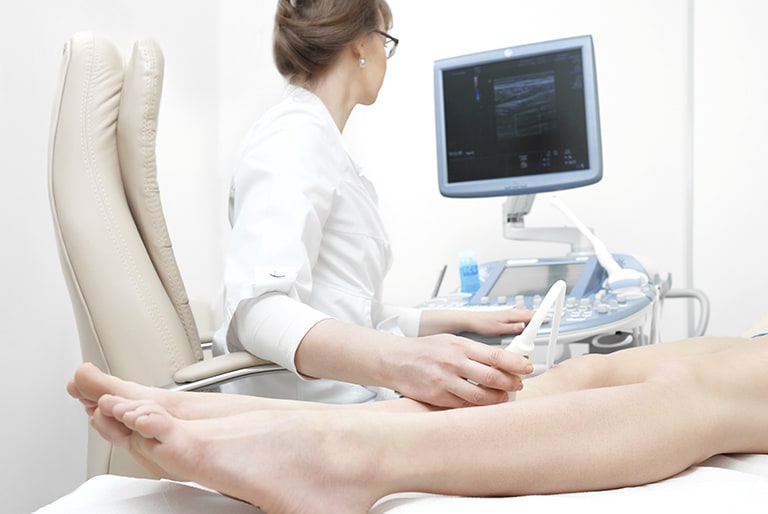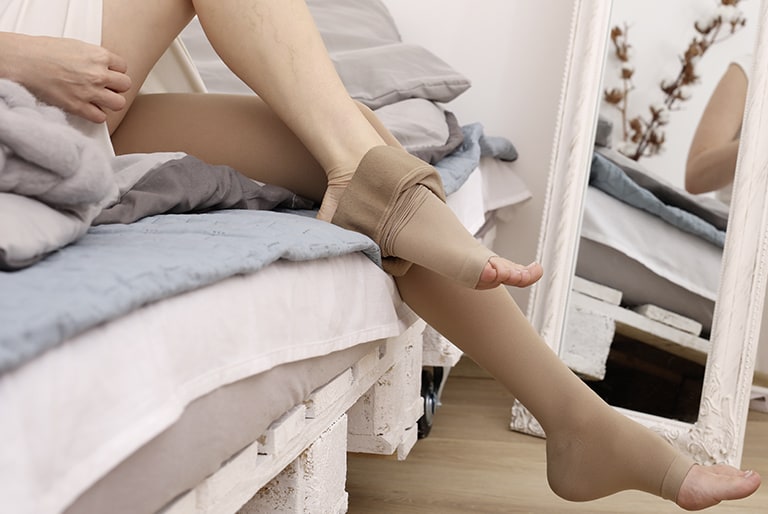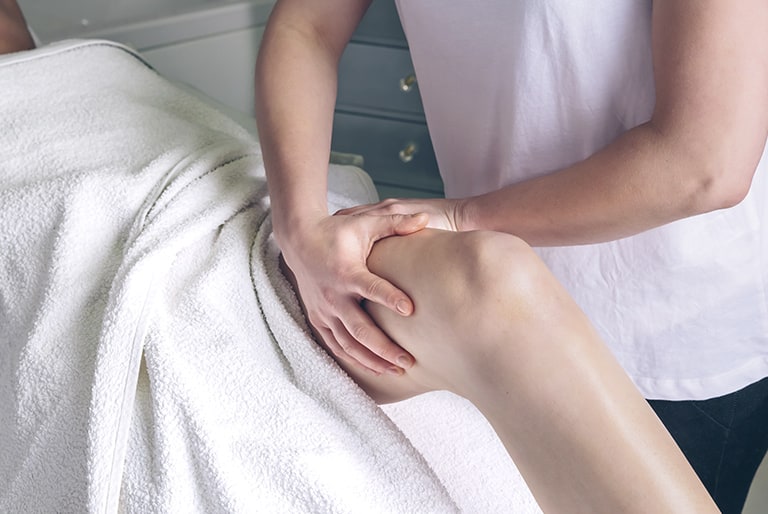Radiofrequency therapy for varicose veins
Varicose veins can be removed with the help of radiofrequency therapy, also known as radio wave therapy and radiofrequency ablation. Since the operation does not require any large incision, causes hardly any pain and can be carried out as an outpatient, this procedure is considered to be very gentle.

What is radiofrequency therapy?
What exactly happens during treatment with radiofrequency?
First of all, the doctor locates the affected vein with the aid of an ultrasonic device and marks it on your skin. Also using ultrasonic monitoring (duplex sonography), the operator slides a radiofrequency catheter into the vein and up to the defective main venous valve. A so-called tumescent solution is injected around the trunk vein so that the patient does not feel any pain. It not only anaesthetises the tissue, but also presses the vein together somewhat and protects the surrounding area from the effects of the heat.
On the tip of the catheter there is a heating element which is heated up to 100 degrees Celsius using bipolar radiofrequency energy. As soon as the anaesthesia takes effect, the operator pulls the catheter back through the vein. The heat seals the internal walls of the vessel and your blood can no longer flow back through. Your body reabsorbs the vein over the next few weeks. The insertion points are covered with a plaster after the operation and either a secure dressing is applied or straight away compression stockings.
What happens after the radiofrequency therapy?
After the operation, the patient should wear compression stockings for several days. How long exactly depends on the characteristics of the varicose veins and is decided on by the attendant doctor. Light movement is allowed after the operation, but no excessive exertion. There is a control examination on the day after the operation in order to check the results with ultrasound and to make sure that no thrombus has formed.
For some time after the operation, some patients feel a light pulling on the inside of the thigh. In rare cases, calluses may appear under the skin or brown discolouration on it. As a rule, these symptoms disappear again on their own.
Who is radiofrequency therapy suitable for?
Radiofrequency therapy is suitable for all patients who suffer from varicose veins and therefore from superficial venous reflux of blood. In contrast to the stripping operation, minimally invasive methods become an option for older people, who have to take blood thinners, or for patients with severe accompanying diseases.As with lasers, radiofrequency therapy can be combined with foam sclerotherapy in order to close small lateral branches of the veins.
What benefits does radiofrequency therapy have?
Die Radiowellentherapie stellt eine schonende und gleichzeitig effektive Alternative zu traditionellen chirurgischen Verfahren dar. Die Vorteile:
- ambulante Behandlung ohne Voll- oder Teilnarkose
- geringe postoperative Schmerzen
- nebenwirkungsarm
- Patienten sind schnell wieder arbeitsfähig
- gute ästhetische Ergebnisse
Which complications can occur with radiofrequency therapy?
As with every operation there can be rare complications and side-effects:
- Small bruises
- Very rarely: nerve damage or burns
- Very rarely: vein thrombosis and vein inflammation
- Very rarely: allergic reactions
Is the cost of radiofrequency therapy covered by health insurance funds?
Radiofrequency therapy is covered by private health insurance funds. Sometimes there are in place special agreements with individual statutory health insurers which then also reimburse the treatment. It is best to ask your health insurance fund before the treatment.
When should you have your varicose veins treated?
You should consult a vein specialist about treatment as soon as the venous insufficiency involves more severe symptoms. Many of those afflicted also view varicose veins as a huge aesthetic problem and therefore wish to have the expanded veins removed. Medication therapy can provide relief against symptoms such as spider veins and heavy, swollen legs. Untreated varicose veins increase the risk of vein thrombosis, which can lead to pulmonary embolism. In the worst case, ulcers can develop on the legs and ankles – even leading to an open leg.
Can you prevent new varicose veins?
The predisposition to venous insufficiency is mainly inherited, but people afflicted can do a great deal to maintain the health of their veins:
- Whole food diet with lots of fresh fruit and vegetables. Where possible, avoid sugar, ready meals and alcohol.
- Movement is the key. Make sure you have a balance if you have to sit or stand a lot at work.
- Contrast shower every day. The change from hot to cold keeps the vessels elastic.
Medicines such as Veno SL® 300 help improve the fluidity of your blood and support the walls of your veins. The active ingredient Troxerutin, which is extracted from a substance from the Japanese Pagoda Tree, supports the ‘impermeability’ of your vessels.


